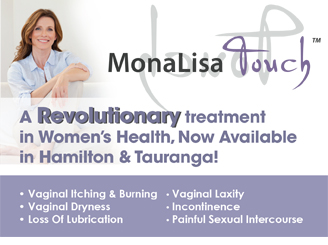Obstetric intervention linked to post partum dyspareunia
August 2, 2015, no responses, by: Women Health Center, Tags:
Post partum dyspareunia linked to Obstetric intervention according to a prospective cohort study published January 21 in BJOG.
“Almost all women experience some pain during first sexual intercourse following childbirth,” lead author Ellie McDonald, PhD, from the Murdoch Children’s Research Institute, Melbourne, Victoria, Australia, said in a news release.
“However, our findings show the extent to which women report persisting dyspareunia at 6 and 18 months postpartum is influenced by events during labour and birth, in particular caesarean section and vacuum extraction delivery.”
The investigators recruited 1507 nulliparous women first 2 trimesters of pregnancy. 1244 participants (83%) completed the study with responses at 0, 3, 6, 12, and 18 months postpartum.
More than half (49.0%) had a spontaneous vaginal delivery, with two thirds of these having a sutured tear and/or episiotomy. Nearly one fifth of participants had emergency caesarean section, 10.8% had operative vaginal birth assisted by vacuum extraction, 10.7% had forceps-assisted delivery, and 9.7% had elective caesarean section.
By 18 months postpartum, 97.7% had resumed vaginal intercourse, and 23.4% reported dyspareunia, which was the main outcome measure.
Operative intervention was linked to dyspareunia at 18 months, after adjustment for confounders. The odds ratio was 2.41 for emergency caesarean section, 2.28 for vacuum extraction and 1.71 for elective caesarean sections compared with spontaneous vaginal delivery.
Dr McDonald said in the news release. “The fact that dyspareunia is more common among women experiencing operative procedures points to the need for focusing clinical attention on ways to help women experiencing ongoing morbidity, and increased efforts to prevent postpartum morbidity where possible.”
Other factors associated with dyspareunia at 18 months postpartum were dyspareunia before pregnancy, intimate partner abuse in the first 12 months postpartum, and maternal fatigue. (In the first 12 months postpartum, 16% of participants reported abuse by an intimate partner, and 32.4% of these reported dyspareunia at 18 months postpartum compared with 20.7% of women who did not report such abuse.
“This is the first study with detailed, frequent and long-term follow-up to assess associations of dyspareunia with obstetric risk factors,” Patrick Chien, BJOG deputy editor-in-chief said in a news release.
“This study provides us with robust evidence about the extent and persistence of postpartum dyspareunia and associations with mode of delivery and perineal trauma. Future research could look into ways of preventing dyspareunia.”
Limitations of this study include reliance on self-report, sample limited to first-time deliveries, and underrepresentation of younger women and non-English-speaking women born overseas.
BJOG. Published January 21, 2015.
Categories
- Endometriosis (3)
- Female Sexual dysfunction (1)
- General (7)
- Incontinence (1)
- Infertility (2)
- Interstitial Cystitis (1)
- Menopause (5)
- Overactive Bladder (1)
- Polycystic Ovaries (1)
- Surgical (2)
Archives
- October 2017 (2)
- March 2017 (1)
- March 2016 (1)
- February 2016 (1)
- November 2015 (3)
- October 2015 (5)
- September 2015 (1)
- August 2015 (2)
- July 2015 (3)
- March 2015 (2)
- January 2015 (1)
Recent Posts
- How Accurate is biopsy sampling in Endometrial Cancer?
- Hormone Therapy: WHI study Follow up reveals no change in Mortality after 18-Year
- How to manage Interstitial Cystitis/Bladder Pain Syndrome?
- Potential Benefits of Diagnosis and Treatment on Health Outcomes Among Elderly People With Symptoms of Overactive Bladder
- The Zika Virus summarised



Leave a Reply